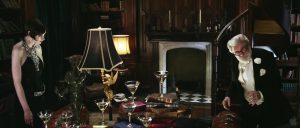Imagine if more than 60% of the food you consume daily is processed, or has been factory farmed. Well… this is the reality for most of us. You may not know but a lot of the food we consume is really bad for us and is slowly killing our bodies. The majority of us want to eat healthy food that fuels our bodies in a positive way, yet we still have these cravings for sweet, salty and fatty foods. These foods all get advertised to look healthy and inviting, to cover up the fact that they are filled with horrible chemicals, artificial flavourings, sugars, and fats. But it is even worse what is put into or on these food to make them more appealing to us.
Advertising is a huge factor for popular food companies such as Macdonald’s, Pizza hut, Subway and many other businesses in the food industry. Companies such as these tend to advertise their product on television, billboards, social media and magazines. They use these platforms to target their audiences, such as teenagers and younger kids. The food industries make it their main goal to produce food which contains a good balance of sugar, salt, and fat that will leave us wanting more. This is because food with the right balance of these three things: fat, sugar, and salt, tend to be the most ‘delicious’ and addicting.It is all an illusion, just like the advertisements you see on television. Have you ever looked at an ad on tv and thought… “that looks so good?” Well did you know that vast groups of editors, photographers, chefs, and designers spend hours! making just one burger look perfect. They create an illusion for their product to be seen as delicious, fast, fresh and healthy, whereas in reality, the burger you buy does not look the same. Most companies would not advertise food that gets served to you. Because imagine if you saw an advertisement with the food you actually get served… Would you still buy that ‘fresh’, ‘delicious’,’healthy’ burger? Probably not!
The second point of my speech is why we crave food and what fuels these cravings. We want food such as chocolate, chips, pizza, doughnuts, fizzy drinks and so on because they have sooo many bad chemicals and artificial flavours in them. But why do we desire these foods so much? It is because, for most of us, we have been eating processed food all of our lives, therefore it makes it hard to stop eating sugary foods because our bodies and brains have gotten so used it. This can be backed up by science, according to studies: when you put food high in salt, sugar or fat into your mouth, your taste buds send a signal to the lower part of your brain, which stimulates neurons or endorphins that perceive a rewarding experience. This means that because our brains like the endorsements that get released whilst eating these foods, our brain wants more sugar, salt, and fat. We want to go back for more, once you take a bite of a cookie, you want to keep eating it.
Ever wondered what’s in your food? or what it actually means by ‘natural flavourings, ‘natural colourings’, ‘sugar-free’, or ‘fat-free’? They all mean soo much more than what it seems and as it goes for your food, well the majority of the food you consume is probably chemicals and antioxidants. In order to protect themselves and their company, the big manufacturing companies have kept a low profile for the past decade, hiding behind the faith of commercial confidentiality, claiming they can’t reveal their recipes because of competition. Anything that comes in a box, tin, bag, carton or bottle has to be labeled with a list of its ingredients. But many of the additives and ingredients that once jumped out as fake or manufactured have slowly disappeared. In some cases it means that the contents of the product have improved, but not for the majority of the labeled food. Over the past few years, the food industry has invested in a new idea called: “clean label’, the purpose of this is to remove the most glaring industrial ingredients and additives, only then to replace them with substitutes that sound more benign and natural. The same chemicals and additives are still in your food, apart from they are just being labeled differently to sound more friendly and eatable. When the companies label their product with ‘natural flavourings’ there is actually a very little difference between natural and artificial flavourings. They are both made using the same physical, and enzymatic, processes. This is the same for ‘Natural colourings’ since their only difference is that ‘natural colourings’ start with pigments that occur in nature.But then both colourings are made using the same highly chemical industrial processes, including extraction using harsh solvents.
I hope this has made you realise just how little we really know about the food that sits on our supermarket shelves, in boxes, cartons and bottles – food that has had something done to it to make it more convenient, ready to eat, and last longer for better sales. The advertisements often seen on television are fake because they portray their real image of the food they serve to their customers, which could be you. In the food industry, the majority of companies try to get the perfect balance of fat, sugar, and salt when making their product since these three things can be addicting. More importantly, we all need to try to be more aware of what the labeling says on our product and what is really in it because some of the chemicals and antioxidants that are put in our food can be deadly and can even cause things such as cancer and diabetes.Just think, before you take a bite of that delicious looking piece of food, is it worth feeding yourself poison?

